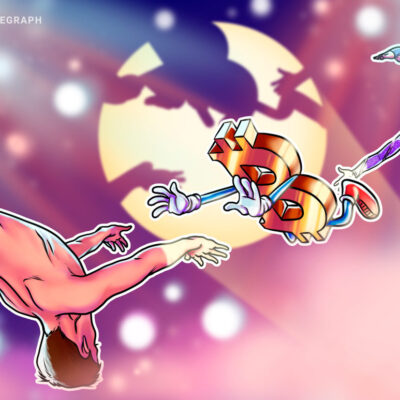The cryptocurrency sector has undergone a seismic shift in recent years as retail investors and publicly listed companies make their way into the space.
Globally, estimates suggest that the number of crypto users surged by about 190% between 2018 and 2020.
Record-breaking inflows into the market have also taken the number of active addresses on the Bitcoin network, as well as trading volumes, to all-time highs this year.
On the face of it, all of this should be cause for celebration — and it is. But here’s the problem: While Bitcoin’s network is enjoying a surge in demand, it could be argued that the blockchain’s infrastructure isn’t keeping up.
Bitcoin’s block size of 1MB means that this blockchain can only handle about five transactions per second on average. Extrapolate this to a 24-hour period, and you’re looking at about 86,400 transactions. Despite this network’s immense achievements, this makes it mathematically impossible for the blockchain to fuel global payments in its current form.
All of this has caused BTC transaction fees to surge — and according to some estimates last month, they managed to break the record of $62 that was set back in December 2017. A dramatic drop in the network’s hash rate, linked to power outages in the Chinese mining hub of Xinjiang, were blamed. The consequences are obvious, as this means that the blockchain becomes too expensive for many of us to use… especially for smaller transactions.
Solutions have been put forward, the most notable of which being the Lightning Network. But as Cointelegraph has reported, adoption has been slow in the three years since launch, with some users opting to endure pricy on-chain transactions because of the technical requirements associated with this L2 alternative.
Back in February, research suggested that 88% of Bitcoin transaction inputs also end up paying higher fees than are necessary because they fail to use the SegWit format, which helps ramp up capacity. In the past, estimates have indicated that full adoption of SegWit could result in a block size of up to 2MB. We’re a long way off from achieving this — the latest data from TransactionFee.info shows that just 70% of transactions use SegWit, resulting a block size of 1.3MB.
Attention shifts off-chain
Of course, this isn’t just an issue that’s exclusive to Bitcoin. Ethereum has had its fair share of scalability concerns over recent months — compounded by the current bull market, the rise of DeFi protocols and the explosion in NFTs.
All of this has led to a concerted push toward layer-two solutions such as rollups: Smart contract networks that process and store transaction data away from the main blockchain. Vitalik Buterin believes rollups will serve as a sticking plaster that will help the Ethereum network manage current levels of congestion — with improvement proposals also transforming the way that gas fees are calculated.
But there are concerns that even the introduction of Eth2 might not be enough to ensure that this network is futureproof. As Matic Operations’ chief operation officer Sandeep Nailwal told Cointelegraph: “Eth2 doesn’t provide Ethereum infinite scalability. The best-case scenario is 64 shards with shards which can be similar to today’s Ethereum chain. Assume a single chain improves with PoS and has 50 TPS. Even then 64 shards can offer 3,200 TPS. The moment the supply of this TPS hits, the Dapps will start utilizing on-chain aspects even faster and the demand will rise faster. We will again end up in the same situation.â€
What’s the answer?
Some experts in the blockchain industry believe that the only solution to eliminating scalability woes is to build a network that can handle vast amounts of transactions from the offset.
ILCOIN initially began as an alternative to Bitcoin but has now evolved to become its own unique blockchain network. This project shares the same base as Bitcoin SV, Bitcoin Cash and Bitocin itself: SHA-256.
In March 2021, the blockchain service provider TAAL claimed that it had managed to process a 638MB block on Bitcoin SV — far beyond the current, theoretical limit of 128MB. That’s a sizeable improvement on the 1MB block size that BTC is limited to, and some way ahead of BCH’s 32MB block size.
A 5GB block was produced on the ILCoin blockchain in 2020 thanks to the use of the RIFT protocol, which allowed the block size to increase without transaction speeds being compromised. This can be verified under block number 310280 on ILCoin’s Block Explorer.
Overall, the project says that it can deliver true decentralization, all while outperforming speeds on the Visa network by a factor of 10.
With financial institutions including Visa and Mastercard paying ever-closer attention to what blockchain technology is capable of — alongside mainstream banks — ILCOIN says it delivers unparalleled infrastructure that’s well-suited to the next generation of payments.
Disclaimer. Cointelegraph does not endorse any content or product on this page. While we aim at providing you all important information that we could obtain, readers should do their own research before taking any actions related to the company and carry full responsibility for their decisions, nor this article can be considered as an investment advice.







